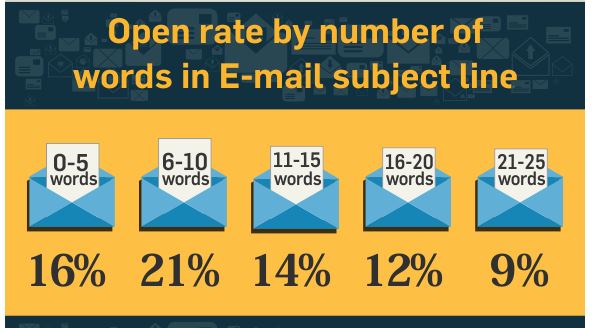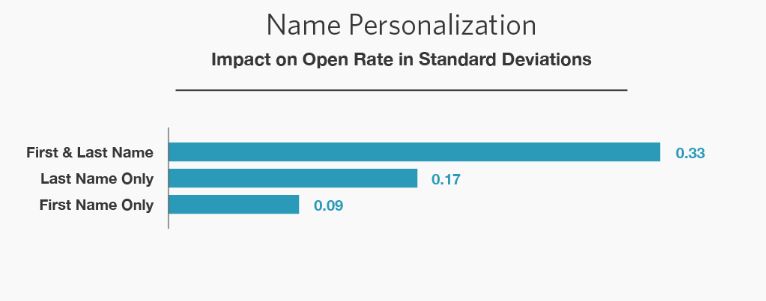The email campaign remains one of the most durable online marketing programs out there. However, as more consumers than ever try to limit their association with any company they have not directly opted into, the open rate for unsolicited or generic emails continues to drop. If you want to keep your clickthrough rate high, you need to invoke different kinds of A/B test procedures to vet your hooks. Here are 15 brilliant ways to test your email subject line choices.
1. Separate Your Audience
Niche-oriented marketing trumps the wide-net strategy every day of the week in today’s business landscape. People only deal with emails that solve immediate problems, and they will be more likely to open and respond to a personalized message. Test various messages for their potential to engage, and generalize your subject lines from there.
2. Optimize for Mobile
One mistake many marketers make is to stay entirely focused on the message and forget about the formatting of the email. Mobile devices may give your audience an entirely different perspective of your campaign or give away the punchline too early. According to the 2016 Mobile 500 white paper by Internet Retailer, mobile makes up at least 30% of all commerce in the United States. It must be respected as its own entity and your message must be formatted to fit. Your open rate on mobile will continue to become more important each year.
3. Test for Brevity
Shorter is usually better in any marketing context. Buzzfeed has built its entire brand on this strategy, creating the shortest email subject lines that it possibly can, to maximize the impact of the words and force an open. A/B a few subject lines against some shorter counterparts and test the response.

4. Test Alt Text
Some people still use email clients or spam blockers that block out images within emails. As great as images are for email, if your message relies completely on them, that message may be lost on your customers. This is especially true if you are including images in your preview windows alongside your subject line text. Test your clickthrough rate with alt text as opposed to just images.
5. The Overly Familiar Email Subject Line
Yes, you read that right…Matt Becker of the successful personal finance site, Mom and Dad Money, sends emails as though they are talking to friends. There is no overbearing technical structure, nor does he try to impress you with wordiness in his email campaign subject lines, which reflect his brand positioning and theme. This may be the one thing you are missing if you are in a technical field. People may be looking for an expert who sounds like a friend!
6. Starting with the CTA
The CTA, or call to action, is traditionally left to the end of the email. This is not the way that the mind of the new consumer functions. “Get to the point,” they are usually screaming mentally by the time they are halfway through your email. Try using the CTA as the subject line and see how it works for you.
7. Creating Urgency
One of the best marketing techniques in any capacity is to create urgency in your potential consumer. If you can do this from the very beginning of your interaction, you stand a much better chance of a conversion. Test some subject lines that are not so friendly, but that purposely drive your reader to some sort of action immediately. Fear of missing out is a powerful driver!
8. Test Cliffhangers
This is an ideal strategy for an ongoing campaign or a sequenced series of emails. If you know your message will be spread out over a number of correspondences, you want a cliffhanger at the beginning and at the end of each email. The intrigue should begin in the subject line.
9. Test Humor

This is a great strategy for email subject lines if you are in an industry that does not typically invite humor. Your email will stick out like a sore thumb, begging to be clicked, especially if everyone else’s emails are dry and boring. Go in the exact opposite direction and surprise an old client with a new personality, then see what happens.
10. Creating Vanity
Here is a variation of the “creating urgency” strategy that also plays on the need of certain people to “keep up with the Joneses.” Obviously, a subject line from a fashion company that tells the reader, “Don’t be caught dead in last season’s styles” could be considered a viable use of this technique, but its power can be applied far beyond pop culture. Last season’s style could just as easily refer to flooring or landscaping.
11. Discounts
Discounts placed squarely in your subject line invite your reader to participate in the vice of greed, which is sometimes too much to resist. Don’t try to be “too good to be true,” but inform your potential customer that there is more to be had if they simply click through. OptinMonster found that for customers who are already interested in a certain type of product, a discount ensured a 15% higher clickthrough rate.
12. The Listicle
Listicles are the emails that you receive in this format: “X Number of Ways to do ABC.” They are incredibly enticing because of their promise of organization plus easily digestible information. Listicles are great as email subject lines to send to administrators and personal assistants. These are the people who are always looking for a way to reduce their busy workload. Give them an easy solution!
13. Don’t Be Captain Obvious
A study conducted by Adestra found that newsletters whose email subject lines actually contain the word “newsletter” got a lower opens rate than comparable correspondence without that word in the subject. Taking obvious things out of the subject line not only compliments the intelligence of your customer, but it also reduces the total characters in the subject line. Brevity usually works, as the tip above states.
14. Using a Familiar Name

This does not mean to use the underhanded strategy of finding a name from the personal email account of your recipient and pretending to be that person (there are ways to do this). Use a familiar brand name, or if your potential customer has a relationship with an individual in your company, use that name as a lead-in. Hubspot studied the use of names in a comparison test, and demonstrated that personalization works.
15. Do Not Send from “noreply@company.com”
It is difficult to get an email with this sender and not be immediately offended. No, the sender name is not in the subject line, but in many email clients, it is right beside the subject line. This tip is essential because you may be reducing the value of your A/B tests if noreply@company.com is showing up right beside your subject lines. If you ever use this address, change it in order to uphold the validity of your tests.
Just under half of the people who read your email at all do so because of the email subject line, according to Invespcro. Use the tips above to take special care of this very special phrase, and you’ll see the difference in your bottom line. If you need help developing and testing winning email subject lines, contact us at National Positions to keep sharing the email love.